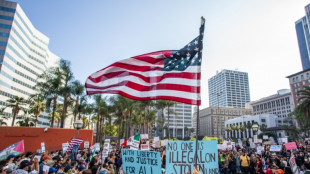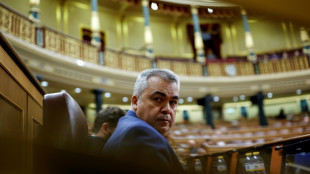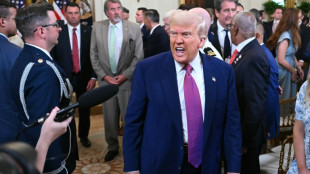

US inflation edges up as Trump tariffs flow through economy
US consumer inflation ticked up in May, in line with analyst expectations, government data showed Wednesday as President Donald Trump's sweeping tariffs began to ripple through the world's biggest economy.
The consumer price index (CPI) came in at 2.4 percent from a year ago after a 2.3 percent reading in April, the Labor Department said, with headline figures cooled by energy prices.
All eyes were on US inflation data after Trump imposed a blanket 10 percent levy on imports from almost all trading partners in early April.
He also unveiled higher rates on dozens of economies including India and the European Union, although these have been suspended until early July.
Trump also engaged in a tit-for-tat tariff escalation with China, with both sides temporarily lowering high levies on each other's products in May.
Despite the wide-ranging duties, analysts said it will take months to gauge the impact on consumer inflation.
This is partly because businesses rushed to stockpile goods before Trump's new tariffs kicked in -- and they are now still working their way through existing inventory.
"As that inventory level gets worked down, we'll see a larger and larger pass-through of the tariffs," Nationwide chief economist Kathy Bostjancic told AFP.
Between April and May, CPI was up 0.1 percent, cooling from a 0.2 percent increase from March to April.
While housing prices climbed alongside food costs, energy prices edged down over the month, the report added.
The energy index fell 1.0 percent in May from a month ago, as the gasoline index declined over the month.
Excluding the volatile food and energy components, so-called core CPI was up 2.8 percent from a year ago, the Labor Department said.
But Bostjancic said she did not expect the inflation report on Wednesday to significantly impact the US central bank's interest rate decision next week.
"The guidance remains that there's such a great degree of uncertainty of how the increased tariffs will affect prices and ultimately the economy," she said.
"They need to wait and see, to see how this plays out over the coming months. And we should learn a lot more from the data through the summer and early fall," she added.
The Federal Reserve has begun cutting interest rates after the Covid-19 pandemic as officials monitor their progress in lowering inflation sustainably.
But Fed policymakers have been cautious in recent months as they monitor how the Trump administration's policies affect the economy.
Z.Chakraborty--MT




